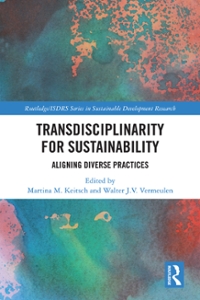Question
Please can you help me by explaining these economics exercises to me Chapter V ELASTICITY exercise 1 The New York Times, a famous American newspaper,
Please can you help me by explaining these economics exercises to me
Chapter V ELASTICITY
exercise 1
The New York Times, a famous American newspaper, reported on February 17, 2020 that subway ridership declined after raising the fare: "There were about four million fewer riders in December 2019, the first full month after the fare was raised from $0.25 cents to $1.50, than in the previous December; that is a decrease of 4.3%."
one. Use data to estimate the price elasticity of these the demand for subway travel.
b. Based on your estimate, what happens to the Transit Bureau's revenue when the ticket price increases?
Exercise 2
For each of the following pairs of goods, which good would you expect to have the most elastic demand and why? a. Mandatory textbooks or mystery novels.
b. Beethoven recordings or classical music recordings in general.
C. Subway rides for the next six months or subway rides for the next five years.
d. Lemonade or water.
Exercise 3
The ability of firms to enter and exit a market over time means that, in the long run,
a. The demand curve is more elastic.
b. The demand curve is less elastic.
C. The supply curve is more elastic.
d. The supply curve is less elastic.
Chapter VI
REPASA
MAXIMUM PRICE: Governments intervene in markets for social reasons. The government sets a maximum price, below the equilibrium price.
exercise 4
The Peruvian government sets a price of $1,000 pesos for a liter of milk, when the equilibrium price is $2,000 pesos.
4.1 Draw a graph of the market with its original equilibrium price, labeling the axes and the supply and demand curves.
4.2 Add in the graph the maximum price of $1000 pesos.
4.3 Now answer: At the maximum price level set by the government, is the quantity demanded of milk greater or less than the quantity supplied?
4.4 At this maximum price, is there a surplus or shortage?
4.5 Who did the government try to benefit with the maximum price: consumers or producers?
4.6 Considering whether there was a surplus or shortage, did the government cancel beneficiary to consumers or to producers?
REPASA
MINIMUM PRICE: The Peruvian government sets a minimum price to protect workers (minimum wage); or to protect producers of corn, bananas, etc. (support prices).
Exercise 5: The government sets a price of $3,000 pesos for a liter of milk, when the equilibrium price is $2,000 pesos. 5.1 Draw the graph of the market with its original equilibrium price, labeling the axes and the supply and demand curves, and add the graph of the minimum price set by the government.
5.2 Now answer. At the price of $ 3,000 pesos, is the quantity of milk offered greater or less than the quantity demanded?
5.3 Is there a surplus or a shortage of milk?
5.4 Was the government's decision to benefit producers or consumers?
5.5 Do you think that farmers in this case are encouraged to produce grass for livestock reduces the production of corn, wheat, etc.?
GORRA. viii
TAXES
exercise 6
Suppose the government mandates that beer drinkers pay a tax of $2 per jug of beer.
one. Draw a supply and demand diagram of the beer market without the tax. Show the price paid by consumers, the price received by producers, and the quantity of beer sold. Even without the tax, what is the difference between the price paid by consumers and the price received by producers?
b. Now draw a supply and demand diagram of the beer market with the tax. Show the price paid by consumers, the price received by producers, and the quantity of beer sold. What is the difference between the price paid by consumers and the price received by producers? Did the quantity of beer sold increase or decrease? C. Explain how taxes affect the market, consumers, producers and the government.
SUBSIDIES
exercise 7
Investigate how market subsidies are supported.
A subsidy is a transfer from the government to individuals or businesses. With a $0.50 tax on ice cream buyers, the government collects $0.50 for each cup purchased; with a $0.50 subsidy for ice cream buyers, the government pays buyers $0.50 for each cup purchased:
one. Show the effect of a subsidy of $0.50 per cone on the demand curve for ice cream cups, the effective price paid by consumers, the effective price received by sellers, and the quantity of cups sold.
b. Do consumers gain or lose from this policy? Do producers gain or lose? Does the government gain or lose?
Exercise 8
-What are the taxes levied on the Ecuadorian government? Visit the SRI website. List and say what these taxes administered by the SRI consist of (12 lines maximum).
Step by Step Solution
There are 3 Steps involved in it
Step: 1

Get Instant Access to Expert-Tailored Solutions
See step-by-step solutions with expert insights and AI powered tools for academic success
Step: 2

Step: 3

Ace Your Homework with AI
Get the answers you need in no time with our AI-driven, step-by-step assistance
Get Started


